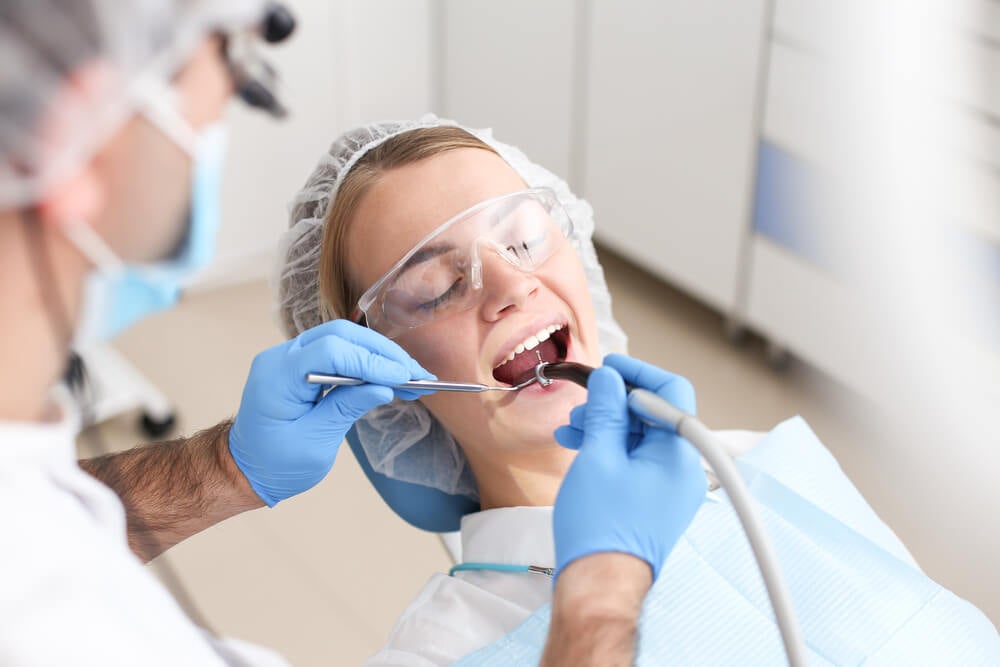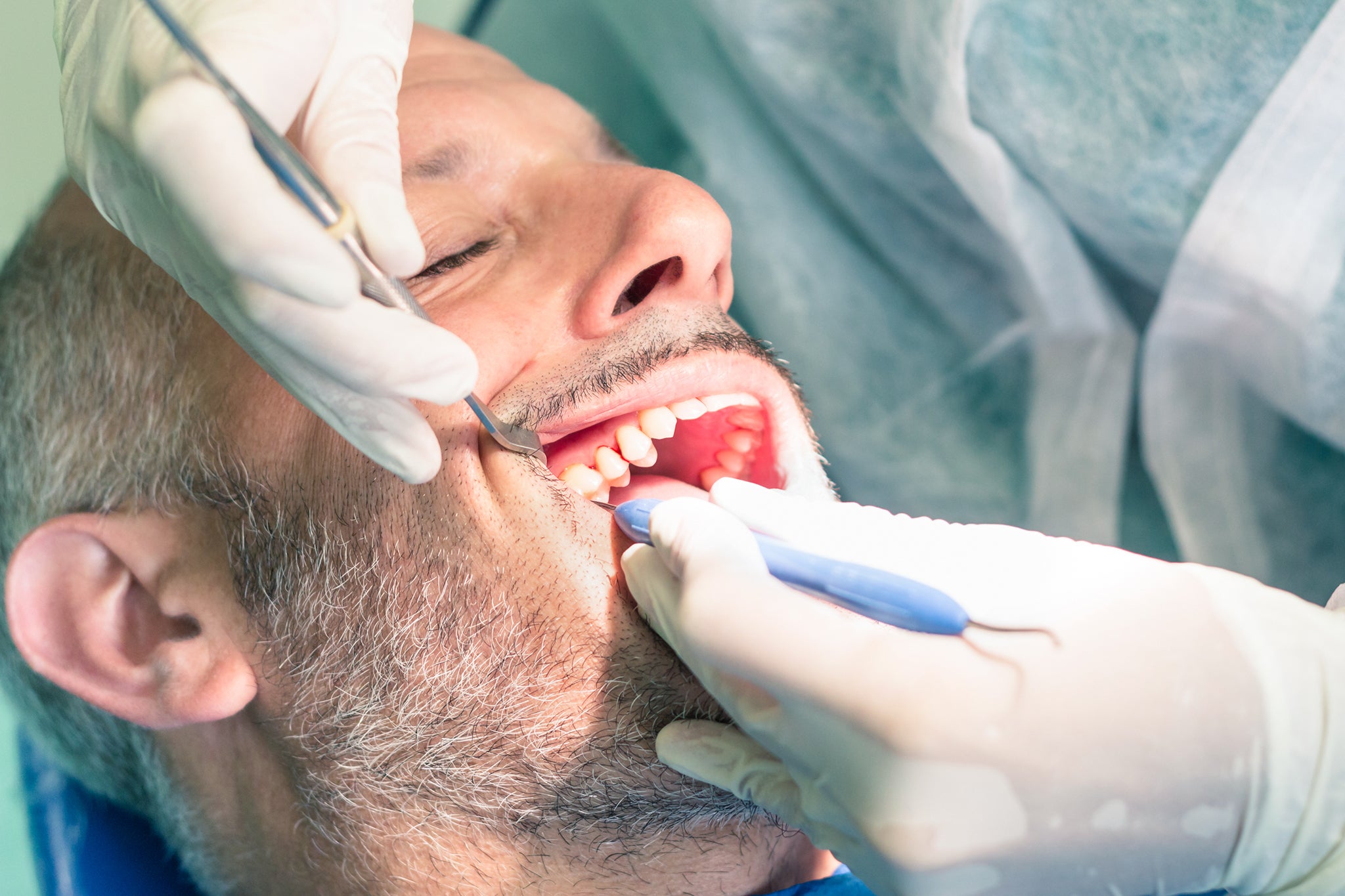
The Importance of Home-based Oral Care in the Prevention of Mucositis and Peri-implantitis
Dental implants had and still have an increasing popularity as an alternative to dentures and dental bridges for replacing missing or damaged teeth. However, with them came a disease that is now raging: peri-implantitis.

SUNSTAR recently hosted a webinar in the Let’s Talk Oral Health series addressing concerns around perio-implant disease and long-term patient outcomes after receiving implants.
Peri-implant mucositis vs. peri-implantitis
Both peri-implant mucositis and peri-implantitis are caused by an accumulation of plaque and pathogens on the implant surface and the response of the host’s immune system to these pathogens.
There are distinctions between the two conditions.
Peri-implant mucositis causes an inflammatory lesion in the gingiva around the dental implant. During an examination, this condition is characterised by bleeding on gentle probing and/or suppuration with or without increased probing depth compared with previous examinations. With the correct dental care, this condition is reversible. In that sense, it is comparable to gingivitis.
On top of mucositis’ characteristics, peri-implantitis however also affects the bone, with the presence of bone loss beyond crestal bone level changes resulting from initial bone remodelling. In the absence of previous examination data, peri-implantitis is indicated by the presence of bleeding and/or suppuration on gentle probing, probing depths of 6 mm or more, and bone levels of at least 3 mm (apical of the most coronal portion of the intraosseous part of the implant). Periodontal disease and peri-implantitis are two presentations of the same inflammatory response to the accumulation of bacteria.
While peri-implantitis around implants was the counterpart of periodontitis around teeth, there are significant differences (Nibali et al, 2022).
Peri-implantitis typically progresses faster than periodontitis, producing an “enhanced and upregulated local host response” to lesions through the production of more plasma cells, macrophages, and neutrophils compared with periodontitis lesions. Peri-implantitis lesions are often much larger than those involved in periodontitis. Furthermore, mucositis lesions may progress to peri-implantitis earlier than lesions around teeth (Nibali et al, 2022).
Risk factors for developing peri-implantitis
Patients with a history of periodontal disease are at greater risk of developing peri-implantitis. In fact, the failure rate of implants is doubled in patients with a history of periodontitis. Consequently, it is paramount to treat and stabilize periodontitis before engaging in any implant treatment to avoid complications or failure. Educating your patients about the risk and, more importantly, instructing proper home-based oral hygiene techniques are crucial steps in the long-term survival of the implants.
Smoking is another significant risk factor for implant patients.
Treatment of mucositis and peri-implantitis
More than 20% of implant recipients develop peri-implantitis. In order to avoid developing this much more serious condition, dental professionals should work closely with their patients at the first sign of mucositis to halt the progression and establish proper oral care rituals and chairside treatments.
The treatment for peri-implant diseases involves removing the accumulation of harmful pathogens that are triggering the body’s inflammatory response.
Dental hygienists are the first line of defence for detecting and treating mucositis. The treatment involves removing the biofilm from the implant surfaces using tools that cause minimal alteration of the implant surface, such as curettes, rotating brushes, polishers, and ultrasonic instruments.
The hygienist should then instruct the patient on proper care techniques to aid in the healing of mucositis and the prevention of future development.
In most instances, surgical intervention is required to halt and reverse the progression of peri-implantitis.
Surgical treatments may include
- Access flap surgery: Opening the gums to access the implant for complete debridement.
- Resective surgery: Removal of bony ledges and flattenings of the bone irregularities around the implant.
- Implantoplasty: Smoothing of implant surfaces, including screw threads, to reduce the surface area for biofilm to cling to.
- Reconstructive surgery: The grafting of bone and tissue to rebuild lost structure.
Often these treatments are used in combination with one another to best meet patient needs.
Prevention of mucositis and peri-implantitis
As treatment consensus is not firm and treatment modalities complex, the optimal case for implant patients remains the prevention of these diseases.
When it comes to periodontal diseases, avoiding plaque accumulation through proper oral hygiene is the key factor to prevent peri-implant diseases. Oral care professionals should regularly and repeatedly provide the right technique to clean teeth and implants, and demonstrate the use of appropriate tools to achieve optimal plaque removal. Working with the patient, the hygienist or dentist can develop a care plan that works with their specific needs, including at-home tools such as threaded floss, water floss, mouth rinses, electric/manual toothbrush, interdental brushes, or other tools designed to stimulate the gums.
Dentists should also consider the primary method of prevention which, according to the ITI Treatment Guide, is achieved with the 5Ps through proper assessment, placement, and long-term patient after-care.
1. Planning
Assessing the state of the teeth and gums prior to placement of implants, such as the volume of keratinized mucosa as well as the occlusal and mesial-distal space, to determine any need for additional surgical intervention or orthodontic therapy.
2. Preparation
Ensure your patient understands all risk factors and indicators, such as smoking, diabetes, and medications they may be taking. This is also a good time to reinforce proper hygiene to combat existing periodontal disease and prevent future occurrences.
3. Placement
Place the implant or implants following proper surgical techniques.
4. Prosthesis
Prosthesis design must allow daily cleaning by the patient. Screwed prosthetics may be recommended to avoid cement excess. Loose abutments and heavy occlusal forces need to be addressed.
5. Prophylaxis
Reinforce good oral hygiene and the importance of professional cleaning of implant surfaces every three to six months.

